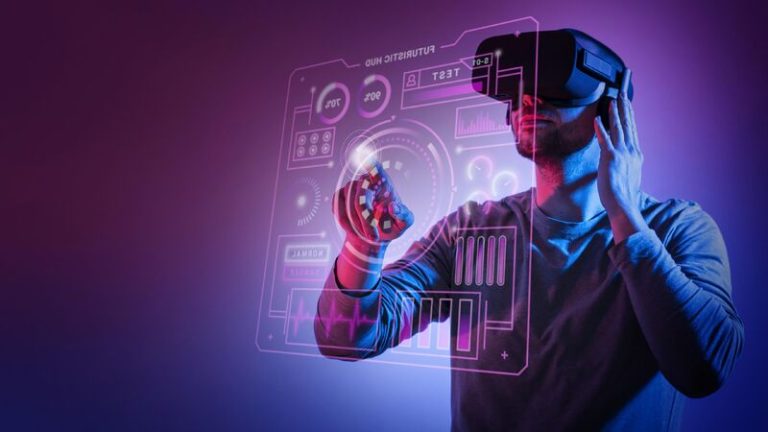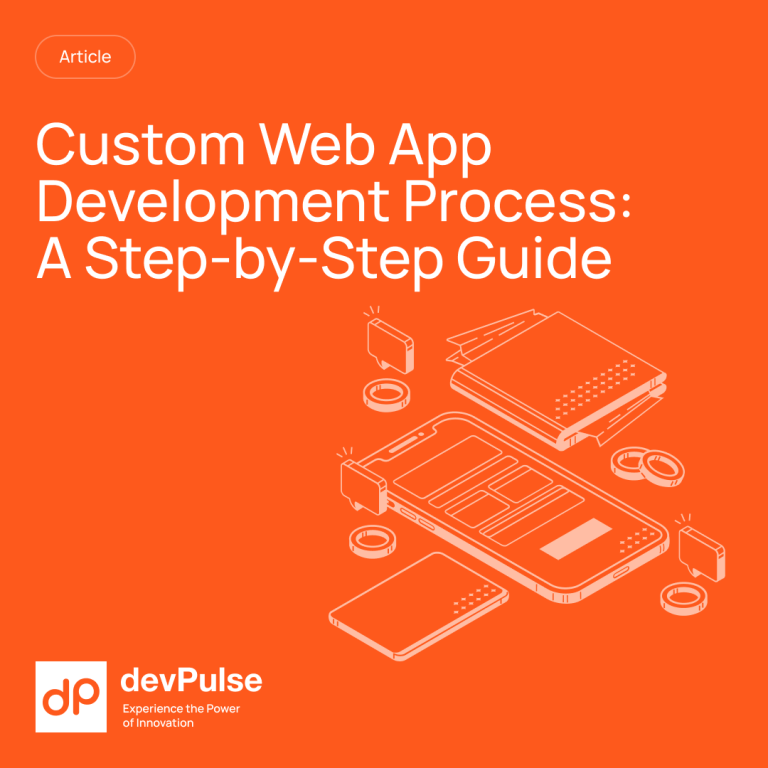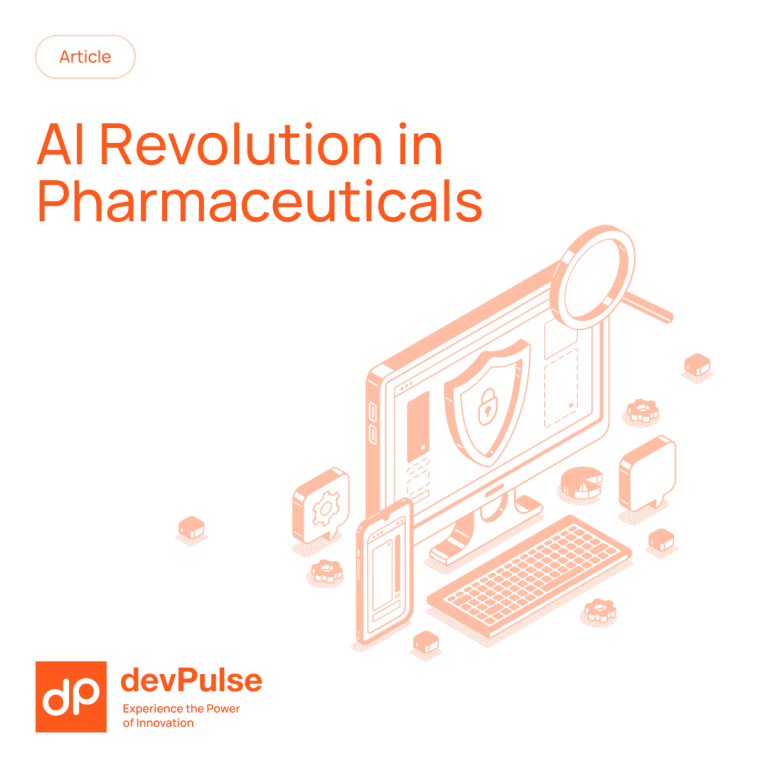Howdy 🤠 Today, we’re continuing our review of Gartner’s Trends for 2024, talking about their impact, probability of being relevant, and how they apply to our specific niche of web development.
And – today – we’re taking a jab at the topic of Generative AI and how it will change the world.
Spoiler: it will probably change a world, quite ab it.
So, let’s dig in!
If you’d like to read our previous articles in Gartner Trends series, then here they are:
- Machine Customers: How AI is Reshaping Consumer Behavior and Expectations – devPulse Blog
- AI-Augmented Development: Revolutionizing Software Development with AI – devPulse Blog
Understanding Democratized Generative AI
So, what is generative AI (GenAI)? Suppose you’ve ever used ChatGPT, DALL-E, or anything like that. In that case, you already know what that’s all about and how it differs from traditional AI, which primarily focuses on analyzing and interpreting data.
One of the reasons you and I get to enjoy and play with these tools is thanks to the democratization of GenAI, which refers to the increasing accessibility of this technology to a broader range of users, including those without extensive technical expertise.
According to a recent report by Gartner, a leading research and advisory company, the adoption of GenAI is expected to grow significantly in the coming years. The report predicts that by 2026, more than 80% of enterprises will have used GenAI APIs and models or deployed GenAI-enabled applications in production environments. This substantially increased from the estimated 5% adoption rate in 2023.
Why should we care? The democratization of GenAI can level the playing field for businesses of all sizes, providing access to advanced AI capabilities that were previously only available to large corporations with significant resources. By leveraging GenAI, companies can automate tasks, speed up software development, and create personalized content at scale
Benefits of Democratized Generative AI for Businesses
Let’s discuss the benefits of generative AI in more depth and what it can do for your business.
Workforce Productivity
GenAI can automate manual and repetitive tasks like data entry, content creation, and customer support. By delegating these time-consuming tasks to AI, employees can focus on higher-value activities that require human intuition and creativity.
GenAI can aid in the rapid ideation and development of new products and services, reducing time-to-market and allowing you to respond more quickly to changing customer needs.
Improved Efficiency
GenAI can also help businesses reduce overhead costs by streamlining processes and minimizing human error.
For example, GenAI-powered chatbots can simultaneously handle a high volume of customer inquiries, reducing the need for large customer support teams and enabling 24/7 availability.
Granted, these are probably not at the level where they can handle all requests, but I’d say it’s more than sufficient for most queries.
Accessible Personalization
In the past, creating granular personalized content required you to have a dedicated marketing department, whereas SMEs and such usually had to allocate their resources while looking back at their limited resources.
Well, GenAI can generate highly targeted content faster than you can say “ GenAI can generate highly targeted content”
These recommendations are designed to resonate with specificl users by analyzing vast data on customer preferences and behaviors. Such a level of personalization leads to increase in both acquisition and retention as users are being catered to on the level never seen before.
Ultimately, this democratization means that businesses of all sizes can leverage the power of GenAI to gain a competitive edge, regardless of their technical expertise or resources. By empowering employees with GenAI tools and insights, businesses can foster a culture of innovation and continuous improvement.
Real-World Applications of Democratized GenAI
So, are these all just hypotheticals or do businesses actually use GenAI in their workflows?
The best answer is illustrative one, so let’s do exactly that!
Conversational GenAI and Information Retrieval
One of the most promising use cases is conversational search and information retrieval. GenAI-powered chatbots and virtual assistants can understand and respond to natural language queries, providing users instant access to relevant information and personalized recommendations.
- IBM Watson Assistant: IBM’s AI-powered chatbot platform helps businesses create intelligent virtual assistants that can understand and respond to natural language queries.
- Evernote: The note-taking app uses GenAI to power its conversational search feature, allowing users to find notes and information using natural language queries.
Content Creation
Another area where GenAI excels is in writing and automation, and we’re taking here both coding and creative writing. GenAI algorithms can analyze vast amounts of data and generate concise reports, abstracts, or personalized email responses based on predefined templates and user preferences.
- Gmail Smart Compose: Google’s email service uses GenAI to suggest sentence completions as users type, helping to speed up email writing.
- GitHub Copilot: Developed in collaboration with OpenAI, this tool uses GenAI to provide code suggestions and auto-completions for developers, making coding more efficient.
- Salesforce Einstein Summarization: This feature uses GenAI to automatically generate summaries of long-form text, such as articles or reports, saving users time and effort.
Personalization
As mentioned, GenAI democratization also leads to more widespread adoption of personalized content tailored to specific groups or individuals.
GenAI can analyze user data, such as browsing history, purchase behavior, and demographic information, to generate tailored product recommendations, marketing messages, and even dynamic website content that adapts to individual user preferences.
- Netflix: The streaming giant uses GenAI to analyze user data and generate personalized content recommendations, ensuring users see content tailored to their preferences.
- Persado: This company uses GenAI to create personalized marketing messages and subject lines optimized for each individual recipient, leading to higher engagement rates.
Low/No-Code Development
With the help of GenAI tools and platforms, businesses can quickly prototype and iterate on new products and features without requiring extensive coding knowledge. This empowers non-technical teams like marketing and design to actively participate in the development process and efficiently bring their ideas to life.
- Microsoft Power Apps: This platform uses GenAI to help users create custom business applications without the need for extensive coding knowledge.
- Uizard: This startup uses GenAI to enable non-technical users to quickly prototype and design mobile and web applications using natural language commands and sketches.
Adoption Strategies for Generative AI
Right. All of these opportunities sound exciting. How would you implement them in your workflow, and what would it cost you?
Model Availability
One key factor to consider is the availability of GenAI models, tools, and applications as APIs in the public cloud. For instance, if we’re talking about the big kid on the block – OpenAI – they provide API to their GenAIs in both image and text-generating departments.
If you want to generate videos, however, this feature is yet to be made public, thus if you really feel like this is something you need, you’ll either have to shop around for more niche offerings or even have to develop such a model yourself.
Thus, while AI is getting democratized, the potential of easily available models becomes the limiting factor for productivity.
The “Do I Need It” Question?
When developing an adoption strategy for GenAI, it is crucial to prioritize use cases and create a timeline for implementation…or even understand if you have one whatsoever.
Defining your business case involves identifying the areas where GenAI can deliver the most significant business value and aligning these initiatives with organizational goals and objectives. By starting with high-impact use cases and gradually expanding the scope of GenAI implementations, businesses can demonstrate the value of the technology and build internal support for broader adoption.
Humans Are Still in Control
As we’ve talked in our previous breakdown of AI-augmented development, AIs aren’t at the level of being fully independent entities nor can they excel without proper usage.
While I remain skeptical about the whole notion of “prompt engineers” as a profession, employees and business do need to understand how to make the most out of these tools, because tools they are.
To ensure successful adoption, businesses should invest in employee training and education programs to help their workforce understand and utilize GenAI tools and platforms effectively. This includes providing guidance on best practices for data management, model training, and results interpretation and fostering a culture of continuous learning and experimentation.
Mitigating Risks and Challenges
While the democratization of GenAI offers numerous benefits, businesses must be aware of this technology’s potential risks and challenges.
Even More Data Leaks
One significant risk is the potential loss of confidential data. As GenAI models are trained on vast amounts of data, there is a risk that sensitive information could be inadvertently exposed or leaked during the training process. To mitigate this risk, businesses must implement robust data governance policies and ensure that all data used for GenAI training is properly anonymized and secured.
Hallucinations and False Info
One of the reasons why these models still require a deep extent of human oversight is the sheer confidence with which they can blurt out incorrect or completely made up information. And they dish it out with such bravado that a person unfamiliar with the topic will accept them at the face value.
This can be particularly problematic in industries such as healthcare and finance, where the accuracy and reliability of information are critical. To address this issue, businesses must implement rigorous testing and validation processes to ensure that the outputs generated by GenAI models are accurate and appropriate.
Copyright Infringement
Copyright infringement is another potential risk associated with GenAI. As these models are trained on existing content, there is a risk that the generated outputs could inadvertently infringe on the intellectual property rights of others.
Sure, big players like OpenAI already create roadblocks to stop people from generatinv cop[yrighted content but people still find a way to circumvent these restrictions. Even then, these things can unintentionally slip through the cracks.
Misuse and Other Dangers
As these models become more accessible and easier to use, there is a risk that they could be employed for malicious purposes, such as generating fake news, impersonating individuals, or even creating deepfakes.
To mitigate these risks and challenges effectively, businesses must prioritize governance and responsible democratization. This involves establishing clear policies and procedures for using GenAI, ensuring that all stakeholders are properly trained and informed, and regularly monitoring and auditing GenAI implementations to identify and address any potential issues. By taking a proactive and responsible approach to GenAI adoption, businesses can minimize the risks and maximize the benefits of this transformative technology.
Role of GenAI in Web Development
So, combining all that we have learned in today’s article, let’s answer two final questions.
- How does GenAI benefit you the customer?
- How does GenAI benefit us the developer?
Benefits for Developers
This question is a bit more straightforward to answer as these benefits and use cases outlined map exactly, 1 to 1.
We get to be more efficient as we can prototype, write code, and debug things faster. We also erase barriers between tech and non-tech teams as GenAI LLMs can effectively translate requests to language that’s understandable by everyone.
On the customer acquisition and retention front, the personalized marketing and content generation will help us reach out more people than we could have before.
And! Although we do have a dedicated marketing team, we understand that it’s not a luxury that all aspiring dev teams have. And as the story of two Steves – Jobs and Wozniak – tells us is that even the best product in the world need some good marketing.
So, we’re sincerely hoping that the accessibility of these (almost) foolproof marketing tools will let more and more teams wow us with their work and products.
Benefits for Customers
In my personal experience, one of the most frustrating things in the client-developer relationship are these many things that get lost in translation.
With GenAI, it becomes possible for a customer to better explain and demonstrate their exact requirements.
Using chatbots to collect customer criteria will help customers feel more confident and knowledgeable as they can formulate their wants and needs better through LLMs. Because – let’s be honest – even when we try to delegate work to the experts and contractors, we still don’t want to feel embarrassed as if we don’t know anything.
Then, there are also prototyping tools, a “picture’s worth a thousand words” literally coming to life. With tools like Uizard, a customer can show exactly what they want their design to look like, saving developers a lot of trouble and second-guess while also ensuring that there is no mutual frustration about “misunderstanding”
All in all, I expect that GenAI will become this reverse Tower of Babel, if you will, as it will help us understand each other with much more ease.
Conclusion
So, I’d say that Gartner has been right on the money with this prediction, as GenAI will remain the touchpoint of the conversation, and I feel like it will keep on growing faster than we can talk about it.
Just as I was finalizing this article, OpenAI announced its new model – Chat GPT4o – that can talk and is accessible for free.
So, dmeocratization of AI will keep on going further, until “using AI” and “working” becomes one and the same.



